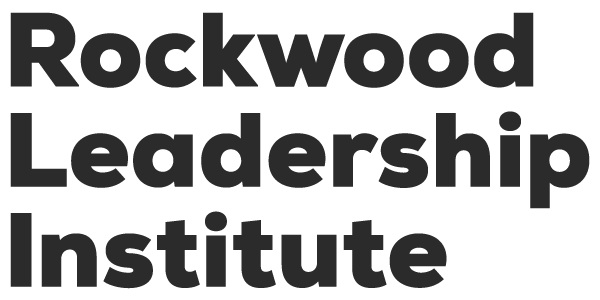
At the end of October 2013, I participated in Rockwood Leadership Institute’s Art of Leadership for Women Leaders in Racial Justice and Human Rights in Calistoga, CA. Twenty-seven women (including myself), and two facilitators learned, laughed, and connected deeply during a week-long training.
I participated in the training in order to learn more about leadership development in practice, as well as to take a moment for self-reflection and evaluation. I can feel the change in myself, and have been able to see others through a very different lens by having a deeper understanding of the impact leadership development can have on people and their organizations.
There were countless moments of learning, but one particular conversation moved me very deeply. It was a collective conversation in a small group looking for long-term “personal ecology” strategies to maintain a lifetime of commitment to the social sector.
The social sector prides itself in fighting for the betterment of people. Regardless of mission, strategy, or scale, people tend to be the focus of the work. At the same time, there is a gap in the way the sector functions, and its people-centered focus. People working in this sector are not being taken care of completely. The gap is evidenced in the high burnout rates of staff, or when organizations cannot afford full-time employees, and consequently deny some of their core staff benefits and paid holidays.
Some of the most common, although not universal, gaps we identified during our conversation were:
- No retirement plans, or plans that will not meet all of the staff’s basic needs.
- None, or very short maternity/paternity/family leaves.
- If offered, maternity/paternity/family leaves may not be comprehensive, and/or require some financial loss.
- Inability to offer sustainable and competitive wages.
- Inability to offer timely and fair pay increases.
- Lack of time and/or money for professional development.
- Lack of flexible schedules options.
- No time for vacation and holidays. Many working in this sector work even during their “time off.”
I remember as a senior in college hearing that working in the social sector did not pay well, and that the individual would be left with the personal costs of carrying the movement. These gaps have come to be expected in much of the social sector, and yet many organizations are not talking about it.
Why?
During our collective conversation, we identified the following challenge: the social sector primarily funds its work through grants and donations. Most foundations and private corporations are willing to fund direct program expenses, but may not see the value of funding the internal costs that allow the work to happen sustainably, or that type of funding just may not be available.
As such, it can be challenging for some organizations to balance between the needs they see in their communities, and their organization’s internal needs. Although many executive directors would truly like to provide more support to their staff, they are also looking at the bottom line, and are keenly aware of the untracked costs of fundraising (e.g. financial and time investments for cultivation, proposal development, and travel). Executive directors often place the organization’s survival over their staff’s with the hope that the organization will be able to endure just a little longer.
We concluded that this is a systemic problem, and much larger than an organizational issue.
What now?
Our group created a social sector “Dream List” and began brainstorming solutions for how to close some of these gaps. The immediate challenge was, “How can our organizations afford any of this?” The reality is that some organizations can, but most can’t until foundations and private corporations begin to understand the financial strain caused by funding only certain organizational expenses. Ironically, there is a fear that if these financial partners did know the whole truth, they might not contribute at all. Therefore, organizations would need to be courageous and consciously keep their staffs’ sustainability at the forefront of their fundraising strategies.
We realized that although our Dream List would be a step forward in creating a healthy personal ecology, some of these ideas would be beneficial to more than the social sector and should, at some point, be proposed to state and federal legislators for a greater cultural shift.
Charter for Creating Sustainable Social Change*
1. Shared leadership models
- Professional development for all staff (without exception) with flexibility and capacity for evolution
- Shared fund development among all staff (e.g. cultivate an organizational culture of fund development)
2. Representative leadership
- Promotions from within
3. Sustainable wages based on the description of labor
- Fair, comparable wages, benefits, and increases for all staff
- Additional personal holidays and family days
- Pensions
4. Transparency
- Updated operations manuals that include all of the organization’s policies
- Full knowledge/access for all staff to the organizations’ operations and progress
5. Flexible schedules that optimize performance
- Instead of a 40+ hour workweek, a 32-hour workweek should be the norm, with occasional fluctuations based on need
- Organizational cultures that value personal priorities and responsibilities
Family Support
- Auxiliary programs that attend to circumstantial needs (e.g. day care, out-of-pocket health care reimbursements, transition coaching for laid-off/retired employees)
Humane layoffs/firing and severance packages that can prevent financial gaps for families and individuals
- For example, 30-day automatic extension of benefits, transitional resources, etc.
I share my group’s reflections because major shifts start with small ones. We can all exhibit compassion and humanity by being aware of the well-being of others, especially of the people who we work alongside. If we see that our partners in this work are tired, we can lift them up and promote each other’s personal ecology to ensure that the sustainability of the sector continues. Without people, the sector loses its essential mission. The work must start within our organizations before it projects out into the communities we are trying to serve.
* The Charter was drafted by a subgroup of Rockwood Leadership Institute’s Art of Leadership for Women Leaders in Racial Justice and Human Rights October 2013 cohort. A big thank you to these women for bringing their stories, ideas, and creativity to the conversation. You can connect with Miriam Persley via LinkedIn and on Twitter (@MiriamPersley).
A version of this post first appeared on the Leadership Learning Community blog.
